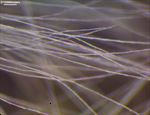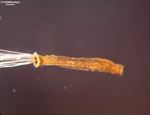Taxonomy
Erechtites hieracifolia (L.) Raf., 1821
Common synonyms
Erechtites agrestis (Sw.) Standl. & Steyerm.; Erechtites carduifolius var. carduifolius; Erechtites carduifolius var. latifolius Klatt; Erechtites hieracifolia var. carduifolia (Desf.) Griseb.; Erechtites hieracifolia var. hieraciifolia (L.) Raf.; Erechtites hieracifolia var. hieraciifolia (L.) Raf. ex DC.; Erechtites hieracifolia var. intermedius Fernald; Erechtites hieraciifolius (L.) Raf. ex DC.; Erechtites hieraciifolius Walp.; Erechtites hieraciifolius f. hieraciifolius; Erechtites hieraciifolius f. minor Waisb.; Erechtites hieraciifolius f. pubescens Kuntze; Erechtites hieraciifolius var. carduifolius (Desf.) Griseb.; Erechtites hieraciifolius var. glabrescens Kuntze; Neoceis hieraciifolia (L.) Cass.; Senecio hieracifolius var. cacalioides (Fisch. ex Spreng.) M.Gómez; Senecio hieracifolius var. carduifolius M.Gómez; Senecio hieraciifolius L.; Senecio hieraciifolius var. giganteus Raf.; Senecio hieraciifolius var. hieraciifolius; Sonchus agrestis Sw.Common name
Fireweed, American burnweed, pileweed
Description
Propagule or dispersal unit is the fruit with pappus. Fertile part 2.5-5 mm long, 0.5-1.1 mm wide, in side view mostly +/- equal thickness (cylindrical) or widest in the middle, +/- straight, the upper (apical) end narrowing, in cross-section round (terete), basal scar (carpopodium) inconspicuous and undifferentiated, central, beak (=thinner sterile stalk between seed and pappus) absent, wings absent, fruit surface light brown or straw, rarely dark brown, smooth (except at cellular level), with simple straight hairs, rarely glands or glandular hairs, thickened margin absent, longitudinal ribs present, (8-)10(-15), their surfaces smooth, with no hairs (glabrous).
Pappus type bristles / hairs, pappus elements all +/- similar, up to 8-16 mm long, pappus elements numerous, elements falling off individually, the individual bristles smooth (by misinterpretation) or rough / serrated (barbellate), +/- equal width along length, white / translucent or pinkish.
Note: As in many other close relatives of Senecio, the pappus of this species is cast off so readily that it may in practice rarely be present.
Ecology
Annual herb, seeds wind-dispersed. Tropical to warm-temperate regions. Found in various disturbed areas, especially after fire, but also in urban areas.
Native range
North America, Central America, Carribean, South America.Introduced range
Eastern Europe, southern China, Japan, Taiwan, rarely in southeastern Asia, New Zealand.

